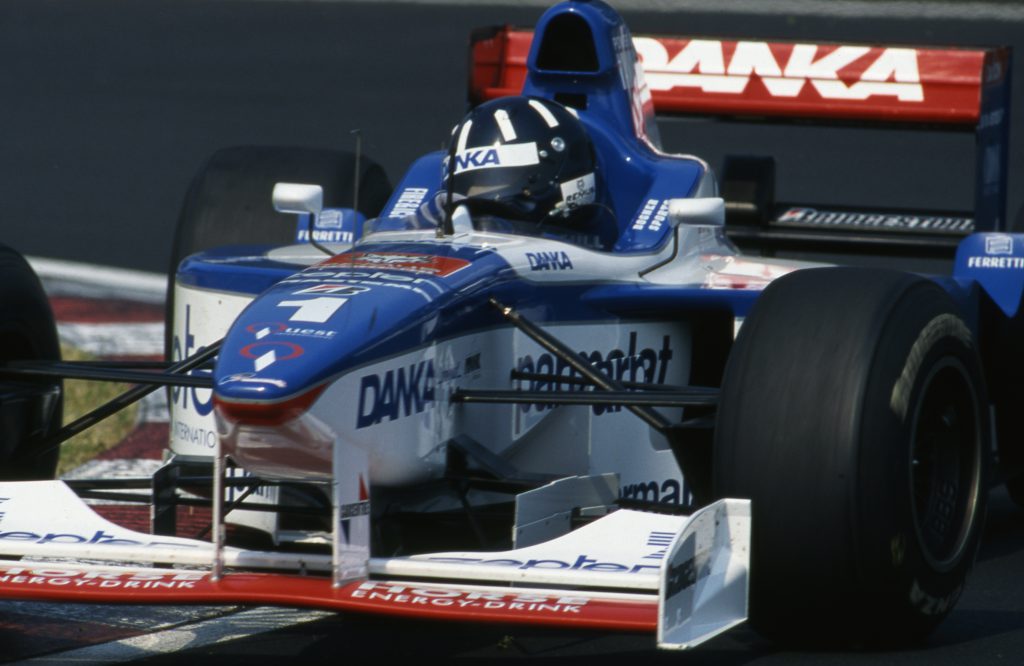Up Next

Yamaha's announcement that it will partner with Lola to enter Formula E next season brings the legendary MotoGP force back to car racing for the first time since its last Formula 1 campaign in 1997.
Its F1 days were mixed to say the least, but one glorious day in its final season Yamaha came close to arguably the greatest shock victory in F1 history with Damon Hill at the Hungarian Grand Prix.
That extraordinary race was the subject of an episode of our Bring Back V10s podcast series – which focuses on great F1 tales from the 1989-2005 period –, in which panellists Glenn Freeman, Edd Straw and Matt Beer dug into exactly how Hill came within half a lap of taking one of the most astounding victories in F1 history.
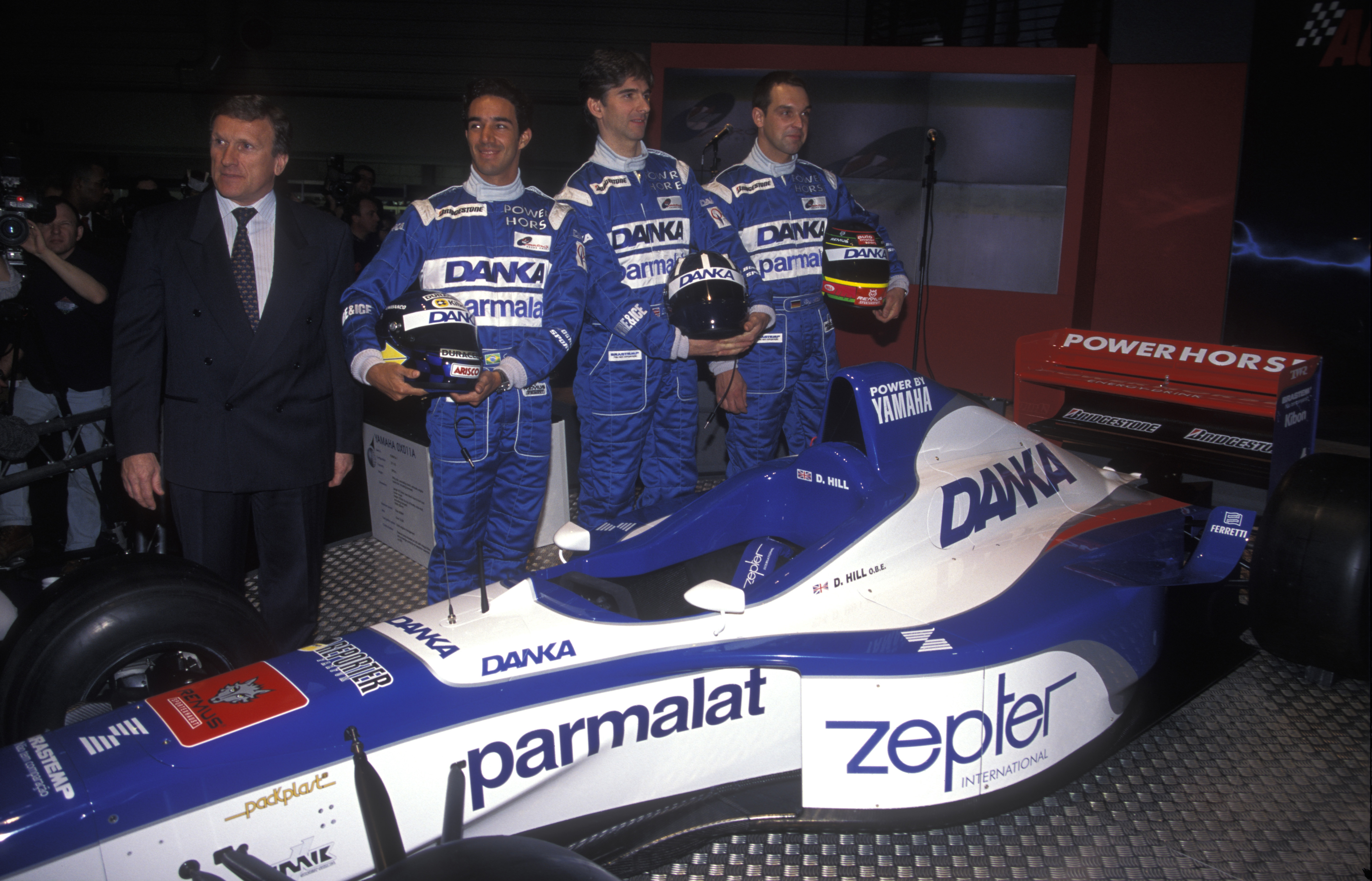
Reigning world champion Hill had already provided a huge shock by picking Arrows when he was ejected from Williams while on the way to the 1996 title.
Arrows had toiled near the back for most of its history, and scored just one point in ’96. Hill was tempted by new boss Tom Walkinshaw’s grand plans and the promise of the new Bridgestone tyres, then suffered the ignominy of struggling to qualify for the 1997 opener in Australia in an unreliable and underprepared car.
Want more F1 97? Join The Race Members' Club and enjoy a forthcoming exclusive podcast series reliving that epic season race by race
By Hungary in August, Hill at least had one point under his belt from sixth in the British GP.
But there had been nothing to suggest the Arrows was going to allow him to qualify third at the Hungaroring, storm past championship contender Michael Schumacher’s Ferrari early on, and dominate the race until the failure of a clutch component left him crawling to the finish and allowed eventual champion Jacques Villeneuve to snatch the win away.
So how did it happen? Here are five key factors we discussed in our podcast.
1. Frentzen’s misfortune

Williams’s controversial choice as Hill’s replacement, Heinz-Harald Frentzen spent most of 1997 being lambasted as unworthy of the drive as he won only one race, sometimes lagged far behind Villeneuve and was involved in multiple first-lap incidents.
But in Hungary, Frentzen had the chance to take a commanding win.
Under the 1997 rules, drivers committed to their choice of tyre compound for the weekend after free practice. Among both Bridgestone and Goodyear runners, the majority chose the soft option – but crucially Bridgestone’s soft was still harder than Goodyear’s equivalent, and those on soft Goodyears were about to find themselves at a huge disadvantage.
The harder Goodyear looked set to hold up just fine in the race, but had been tougher to get speed from in qualifying. Frentzen was the only driver who remotely did so, and he started sixth. He could plan a one-stop strategy while everyone else – even the Bridgestone runners – committed to two.
So once the early leaders made their first stops, everyone had one more to make, and Frentzen was actually 19 seconds clear of Hill.
Frentzen also took the fastest lap, which even by the end of the race held up as seven tenths quicker than Villeneuve, and 1.3s quicker than Hill, who had the fifth-fastest lap of the race.
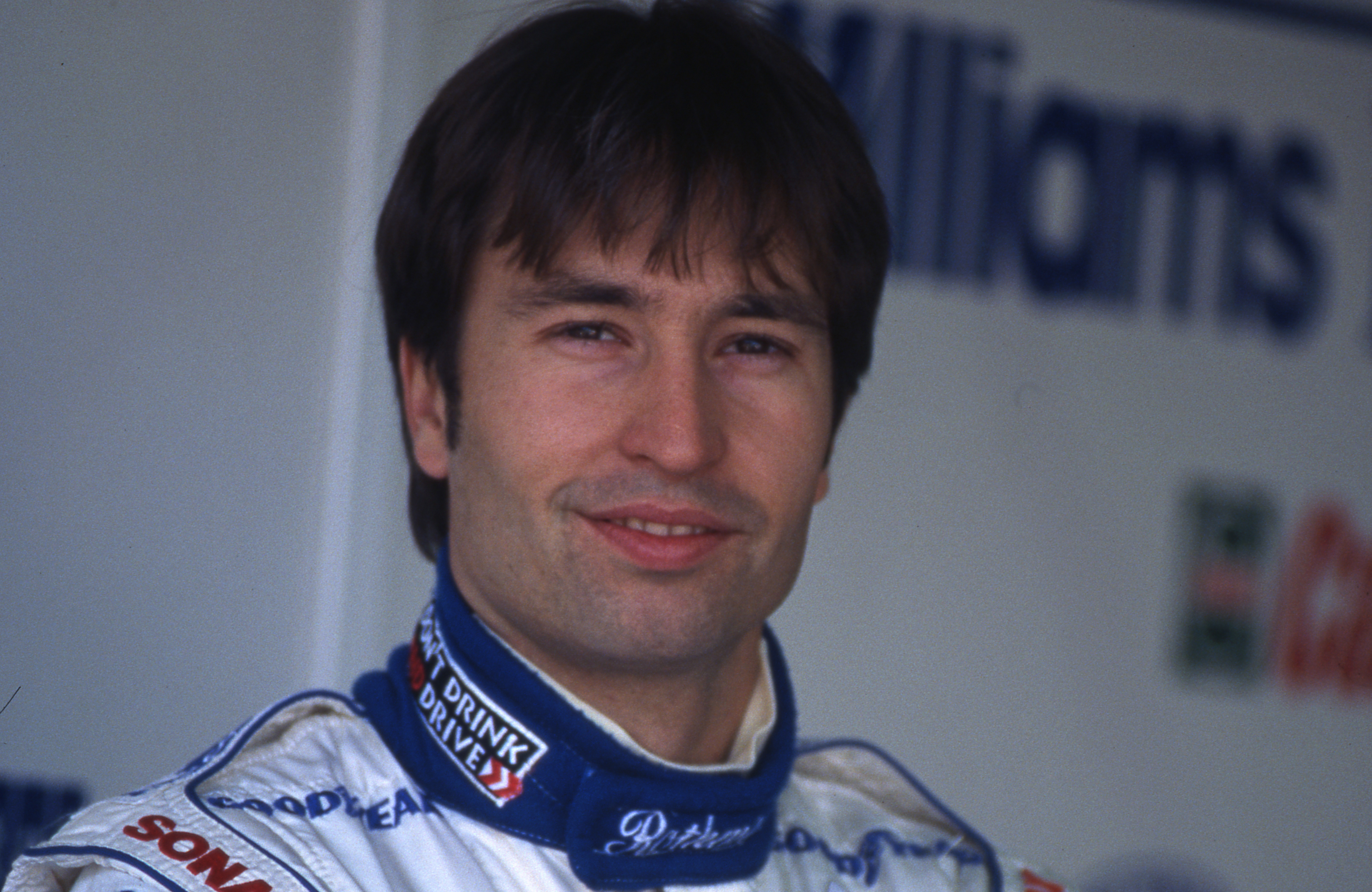
But Frentzen retired in bizarre circumstances before he could even complete his pitstop.
TV footage showed something bouncing free of the Williams on the main straight, and it turned out to be the fuel tank connector – meaning he couldn’t refuel at his stop.
That potentially cost Frentzen a comfortable victory. The only question mark is whether he might have had a problem on the second set of tyres after his stop, given that set had to do over half the race distance.
But all the available evidence suggests Frentzen had this in the bag, judging by his pace on the hards in the first stint. He would have likely rejoined just behind Hill after that pitstop, but looking at Hill’s times over the remainder of the race there is nothing to suggest he would’ve been able to pull out enough of a lead to make his own second stop without dropping behind Frentzen.
2. Schumacher’s last-minute car switch
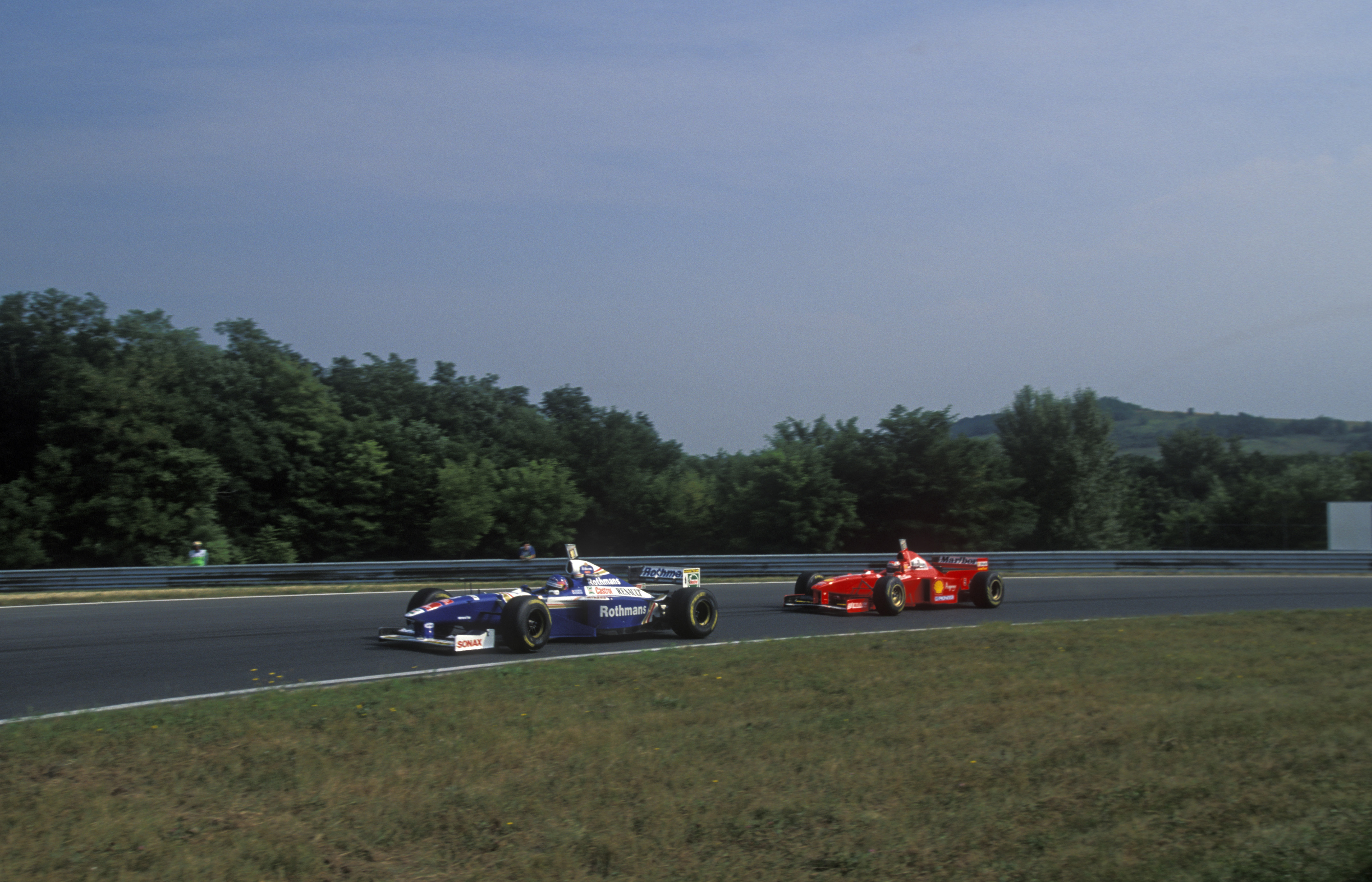
Against expectations – given how far from the front Ferrari had still been in 1996 – Michael Schumacher arrived in Hungary with a 10-point championship lead over Villeneuve, who was making heavy weather of his title bid at this point.
Ferrari brought a new lightweight chassis to Hungary, having revealed it had been struggling to get down to the weight limit with its 310B design before then.
It reckoned the new chassis would be worth 0.3s per lap around Hungary – so 23 seconds over a race distance. Technical director Ross Brawn admitted that Ferrari was now putting a lot of effort into its 1997 car, because of what he described as “an opportunity we didn’t envisage” to win the championship in just Schumacher’s second season at the team.
But having taken pole by 0.187s over Villeneuve, Schumacher went off in the race morning warm-up at the Hungaroring and did sufficient damage to force a change back to the old, heavier, chassis.
That exacerbated the situation with high tyre wear on the soft Goodyears that Schumacher would’ve hit on race day regardless.
Less familiar with how this chassis would behave in the Hungary conditions having not used it before the race start, and not expecting the tyres to fall ‘off the cliff’ – to use the modern Pirelli term – as they did, Schumacher pushed harder than he was supposed to early on.
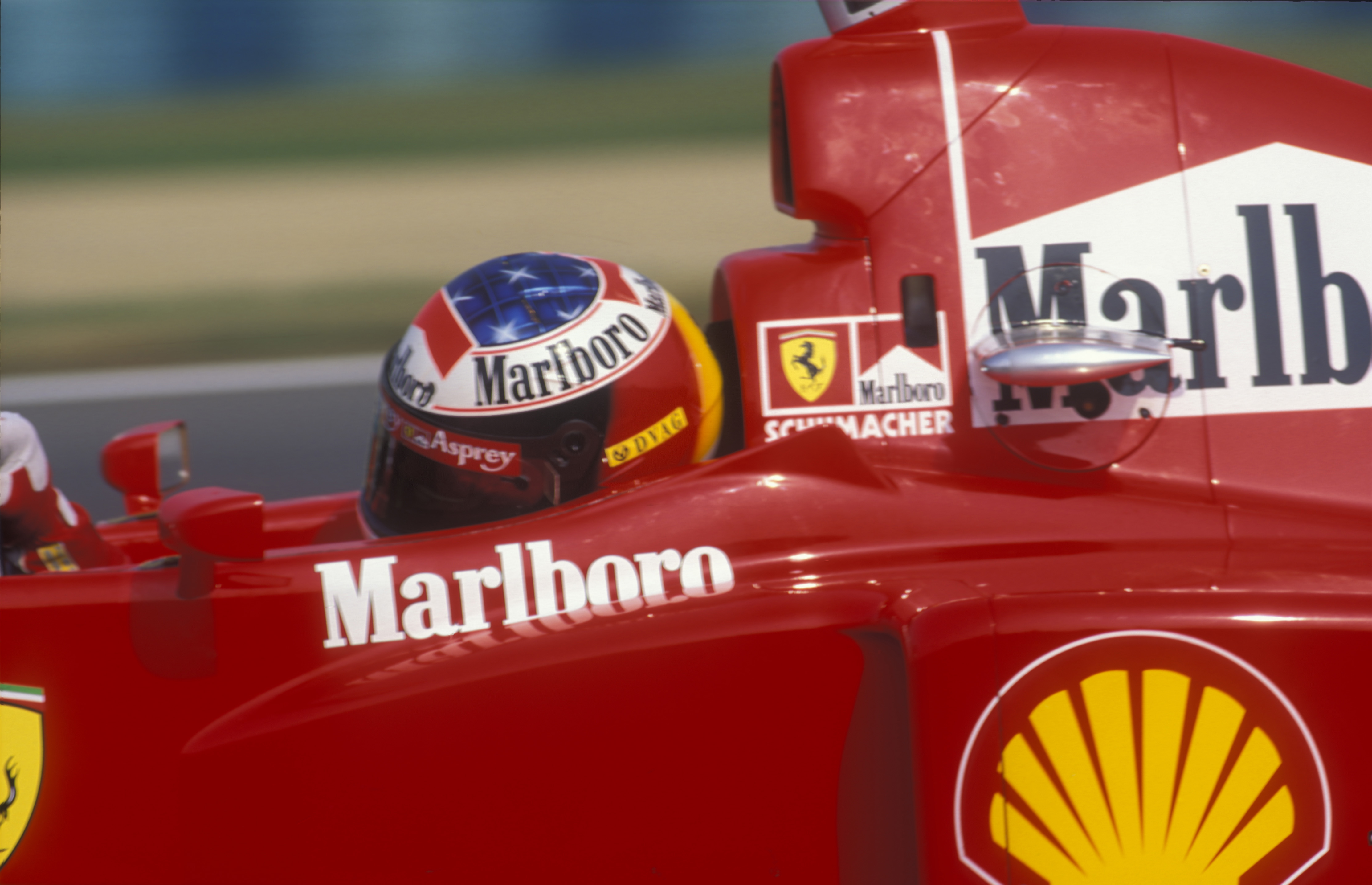
From lap four, his times went from a 1m19.8s to a 1m20.8s, then 1m21.5s, 1m22.7s, 1m23.0s and 1m23.5s. His driving was visibly troubled and he heavily blistered the tyres. You could see from his driving style and pace in later stints that by then he’d worked out how to better manage them.
But by that time, Schumacher had consigned himself to an afternoon of holding back faster cars and an eventual distant fourth place.
3. Panis had broken his legs
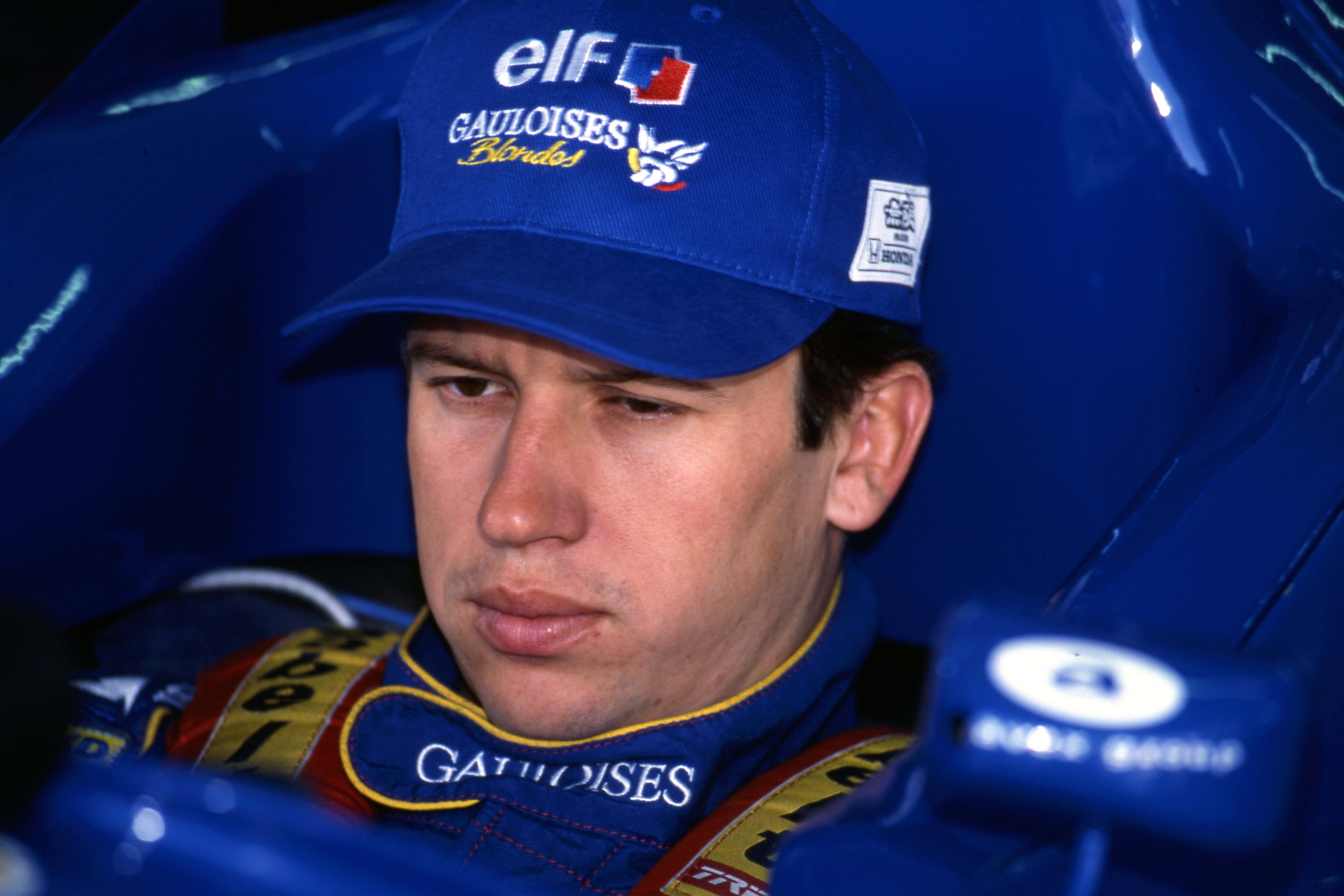
Hill suspected as soon as he tried the Bridgestone tyres on the firm’s old Ligier test car in Japan in late 1996 that there would be days when Arrows had a clear tyre advantage over the Goodyear runners. His mission was to get the team within a second of the pace, then hope for a race where the tyres could take care of the rest.
Bridgestone had been quietly planning an F1 entry for a long time, testing initial tyres as far back as the mid-1980s, and then brought its arrival forward to 1997 unexpectedly – catching Goodyear out and leaving it little time to react.
But Bridgestone only had a roster of underdogs at its disposal: troubled Arrows, uncompetitive minnow Minardi, brand new Stewart-Ford and what had just become the Prost team with Alain Prost’s acquisition of Ligier.
Prost was effectively Bridgestone’s lead team, and over the course of the season was 0.6% faster than Arrows. So where was it on the day Bridgestone had the clearest shot at a race win?
Hamstrung by the absence of its lead driver, was the answer.
Olivier Panis’s podiums in Brazil and Spain (from 12th on the grid), retirement from second in an Argentinian Grand Prix he realistically could’ve won, row two qualifying at Imola and third place in the drivers’ championship approaching mid-season were all hints of what Bridgestone was capable of.

But by Hungary, Panis was sidelined with two broken legs following a vicious Canadian GP crash.
Prost picked then-22-year-old rookie Jarno Trulli from Minardi as Panis’s stand-in. But it soon became clear how much the team had been relying on the well-established Panis’s three years of F1 experience. Trulli had come straight into F1 from Formula 3 that year, while his team-mate Shinji Nakano was also a rookie and in his first campaign of any kind outside Japan since racing in Formula Opel Lotus in 1991.
There were days when it still clicked – Trulli had been fourth in the German GP just before Hungary and would later lead much of the Austrian GP – but the days of Prost being Bridgestone’s lead runner week in, week out ended with Panis’s crash.

Trulli was third and sixth in Hungary practice and very happy with the car, but for the rest of the weekend he couldn’t find any grip. He qualified 12th, 1.2s slower than Hill in the lead Bridgestone car. And even though Trulli was half a second quicker than Nakano in qualifying, Nakano’s driving style was kinder to its tyres so he beat Trulli to the final point by 34s.
Nakano was a competent F1 driver but never a potential grand prix winner, and Trulli was giving an early hint of how he could get lost during the course of a GP weekend. Panis had shown when hounding Villeneuve for the race lead in Argentina before retiring just what he might do in a hot race on a twisty track on a day when Bridgestone had the upper hand. But he could only watch from home on Hungary weekend.
4. Every Goodyear team tripped up
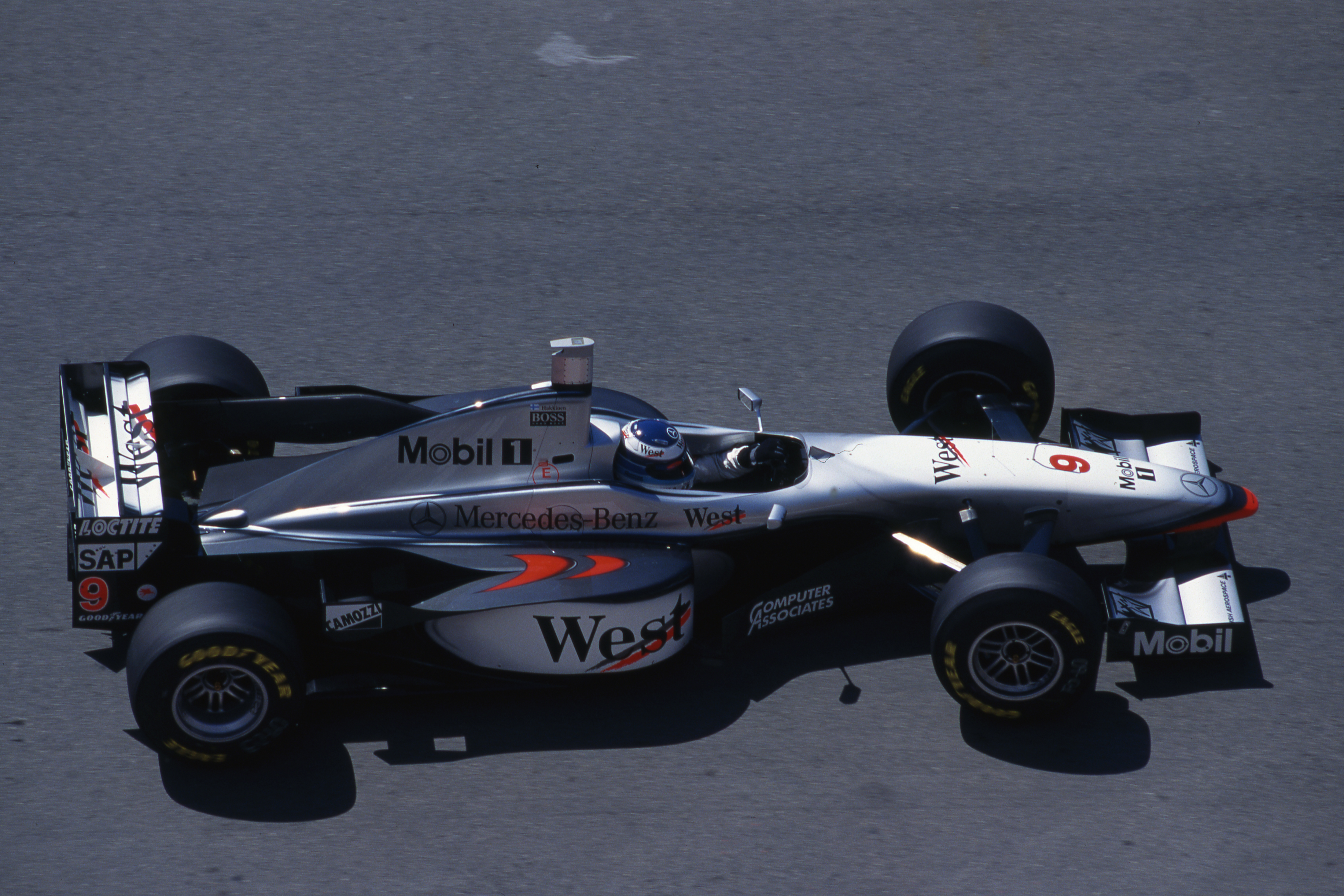
While Villeneuve and – to a much greater extent – Ferrari floundered on the wilting Goodyears, every Goodyear runner that looked like it had a shot at handling the situation better hit trouble or was coming from too far back.
We’ve already mentioned Frentzen’s unbelievable misfortune. But he wasn’t the only potential winner whose car broke.
This race was in a period where the McLaren-Mercedes combination was starting to threaten dominant pace but was still far too fragile. Mika Hakkinen was front of the queue to pass Schumacher after Hill’s move, only to retire with a hydraulic problem just 12 laps in. His team-mate David Coulthard briefly passed Villeneuve after their second stops, and was still shadowing the Williams when his electrics died 12 laps from the end.
The Jordans chose the right Goodyears, the hards, but just couldn’t get any pace out of them on a single lap so started down on row seven. Giancarlo Fisichella eventually spun off while making a messy attempt to overtake Schumacher’s Ferrari, which Ralf Schumacher ultimately followed his brother home rather meekly in fifth.
Johnny Herbert and Sauber had a much stronger 1997 than is often remembered, and ultimately took third in this race. But they were also in a ‘too much work to do in the race’ position as Herbert had only qualified 10th.
Benetton had won the previous race in Germany, but in Hungary it had one of its periodic races of being massively off the pace and in catastrophic tyre trouble. Hockenheim victor Gerhard Berger finished well over a minute off the pace in eighth, while Jean Alesi was beaten to 10th by Ukyo Katayama’s Minardi!
5. Hill and the Arrows were brilliant in Hungary
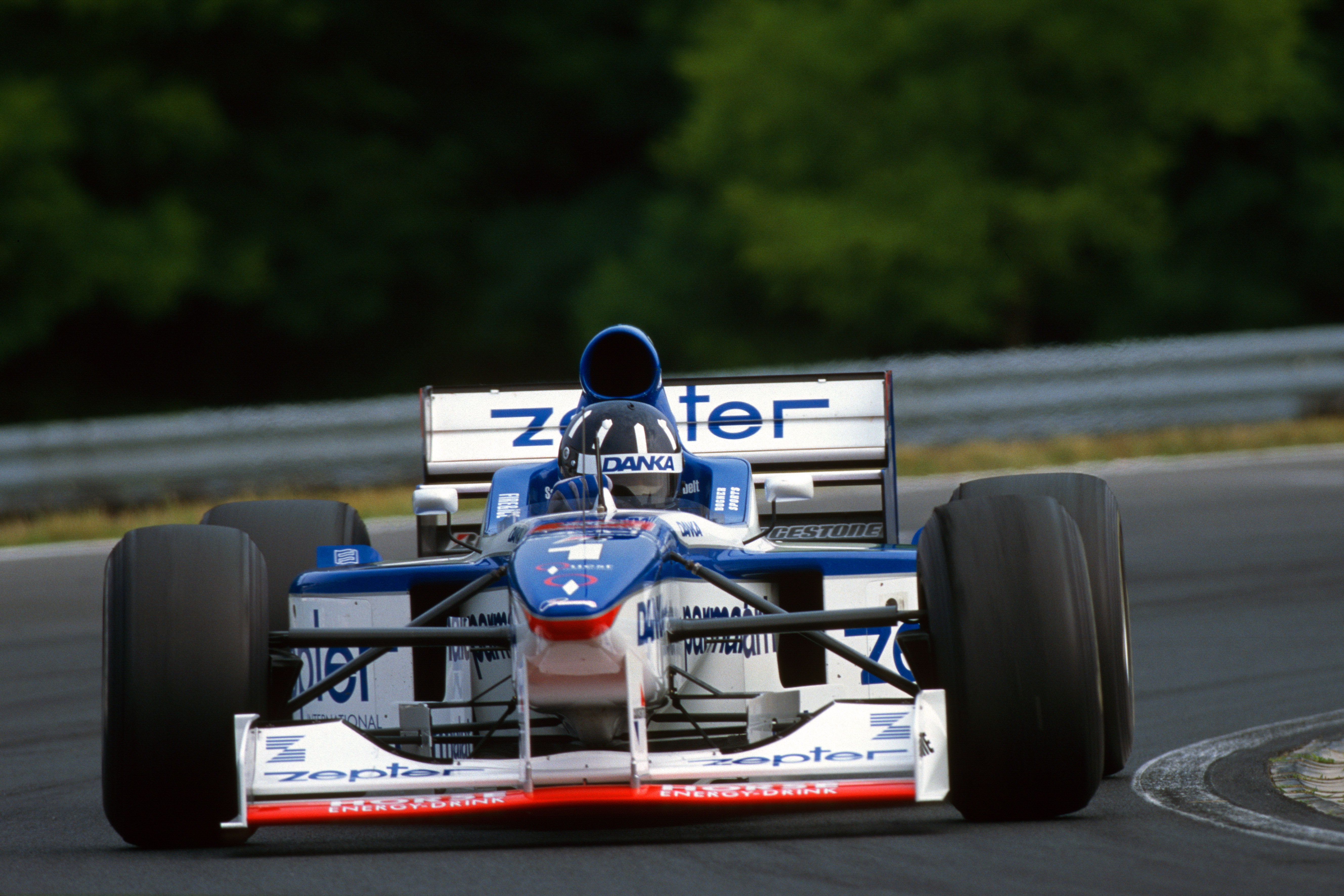
We’ve covered the reasons why the other six teams that won or showed race-winning pace in 1997 screwed up in Hungary, and the fact Hill and Arrows had a clear tyre advantage.
But a massive part of this fairytale was Hill’s absolute brilliance that day, and the twisty circuit negating many of the underpowered Arrows-Yamaha’s usual shortcomings.
Yamaha was making some progress by now, having just upgraded to its D-spec engine, and the Arrows was by this time a fairly nimble car. Or, as Hill described it earlier in the year: “The car was quite nice to drive, probably because it was slow. It didn’t have any downforce but it was well-balanced.”
Plus Hill was traditionally superb around the tricky and technical Hungaroring. He’d even managed to get the awful 1992 Brabham onto the grid there, one of only two races he managed to qualify it for.
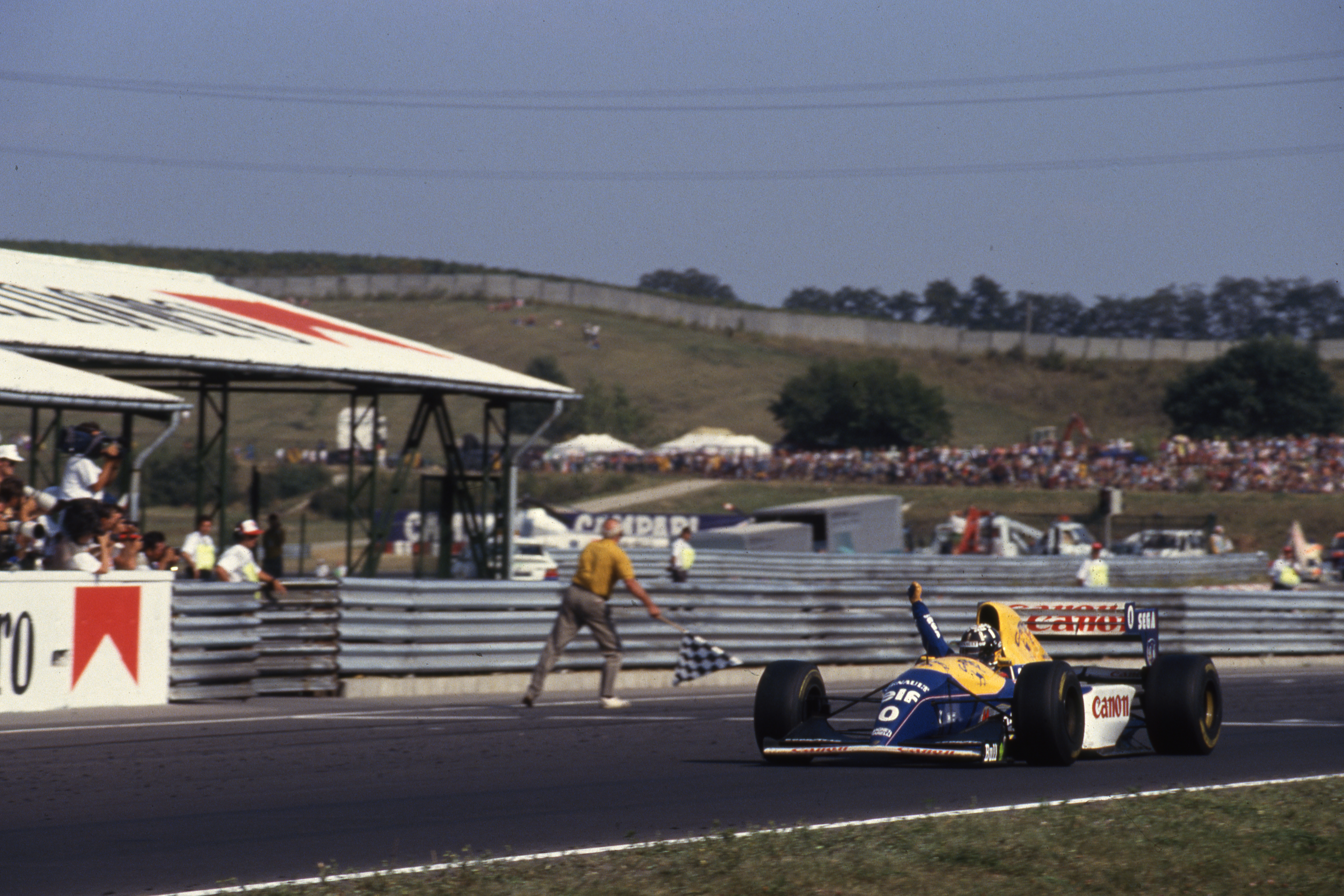
It was the scene of his first F1 win in 1993, and though his ‘95 victory there isn’t well-remembered, it was a brilliant drive in which Hill took complete command of the weekend after a string of confidence-shaking mishaps and misfortunes in preceding races.
No other venue on the 1997 calendar played to the combination of Hill, Arrows and Yamaha’s strengths quite like the Hungaroring.
Admittedly the usual frontrunners all found ways to open the door for him to star, But as Hill showed with that unforgettable, late-braking, sure-footed, Schumacher-squeeze-resisting pass for the lead, on this day he was coming through anyway.


